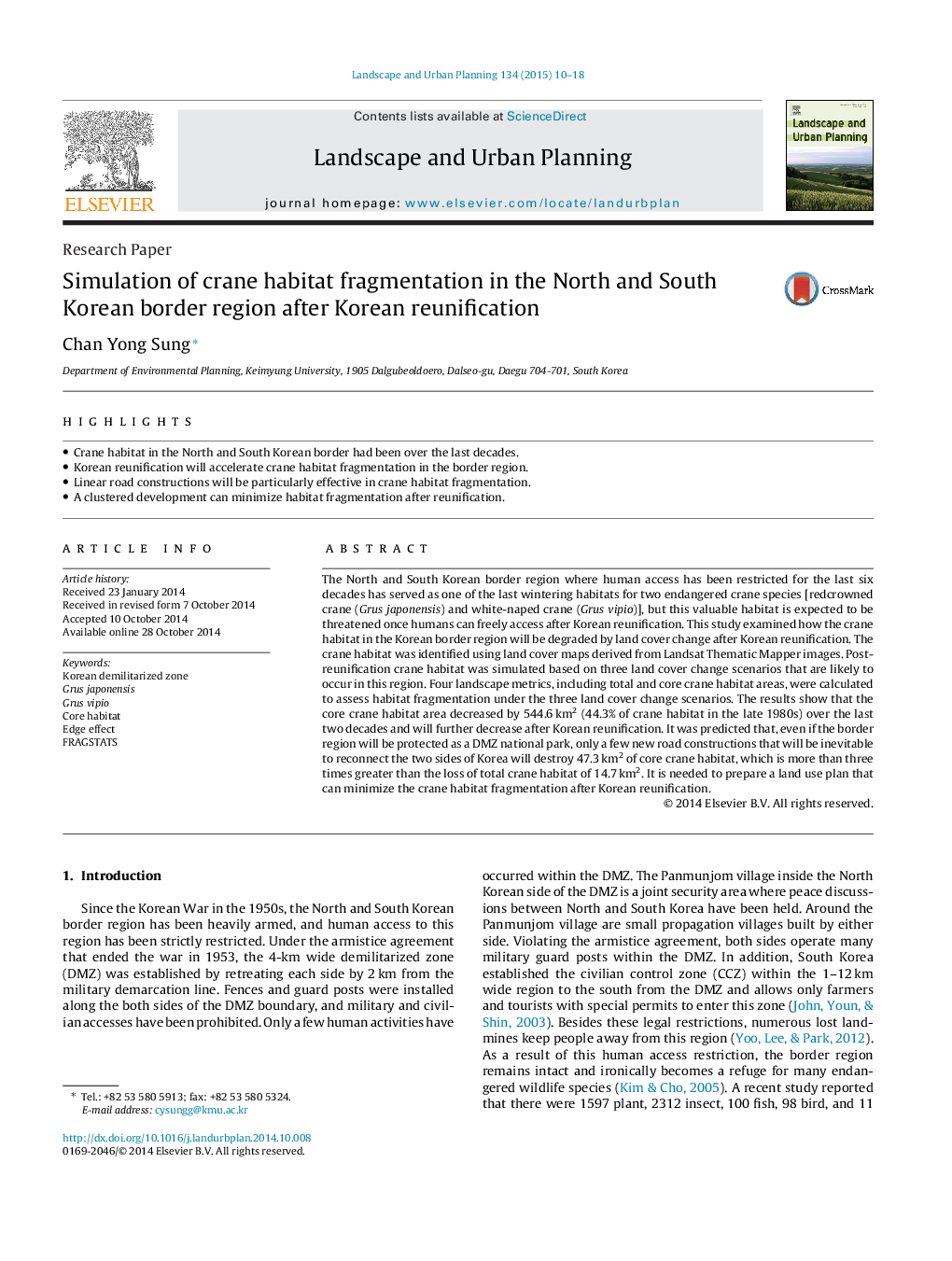| کد مقاله | کد نشریه | سال انتشار | مقاله انگلیسی | نسخه تمام متن |
|---|---|---|---|---|
| 1049146 | 1484624 | 2015 | 9 صفحه PDF | دانلود رایگان |
• Crane habitat in the North and South Korean border had been over the last decades.
• Korean reunification will accelerate crane habitat fragmentation in the border region.
• Linear road constructions will be particularly effective in crane habitat fragmentation.
• A clustered development can minimize habitat fragmentation after reunification.
The North and South Korean border region where human access has been restricted for the last six decades has served as one of the last wintering habitats for two endangered crane species [redcrowned crane (Grus japonensis) and white-naped crane (Grus vipio)], but this valuable habitat is expected to be threatened once humans can freely access after Korean reunification. This study examined how the crane habitat in the Korean border region will be degraded by land cover change after Korean reunification. The crane habitat was identified using land cover maps derived from Landsat Thematic Mapper images. Post-reunification crane habitat was simulated based on three land cover change scenarios that are likely to occur in this region. Four landscape metrics, including total and core crane habitat areas, were calculated to assess habitat fragmentation under the three land cover change scenarios. The results show that the core crane habitat area decreased by 544.6 km2 (44.3% of crane habitat in the late 1980s) over the last two decades and will further decrease after Korean reunification. It was predicted that, even if the border region will be protected as a DMZ national park, only a few new road constructions that will be inevitable to reconnect the two sides of Korea will destroy 47.3 km2 of core crane habitat, which is more than three times greater than the loss of total crane habitat of 14.7 km2. It is needed to prepare a land use plan that can minimize the crane habitat fragmentation after Korean reunification.
Journal: Landscape and Urban Planning - Volume 134, February 2015, Pages 10–18
